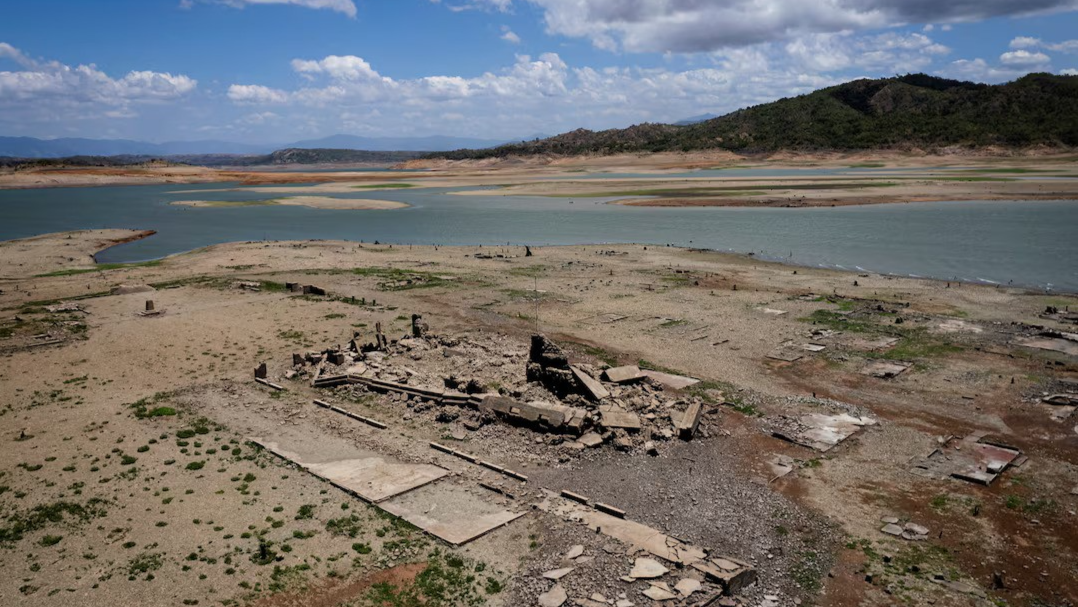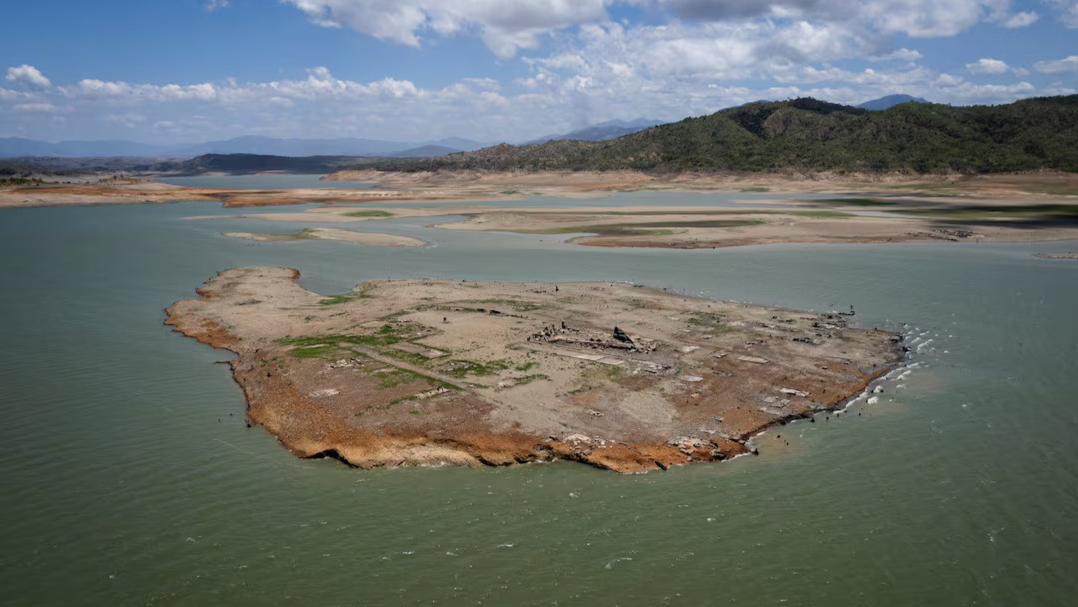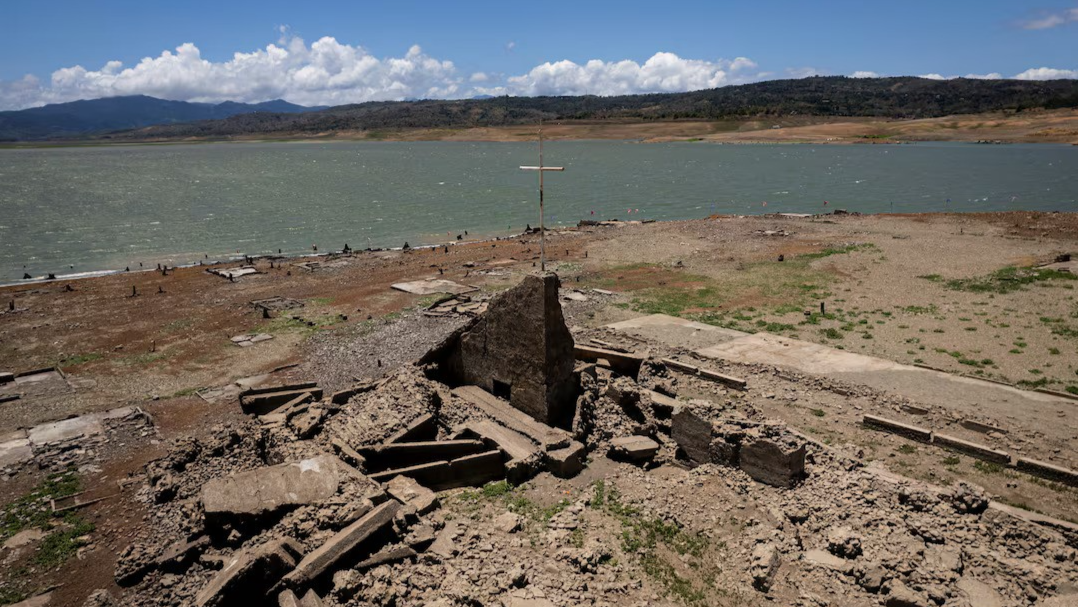
NUEVA ECIJA, Philippines — Ruins of a centuries-old town have emerged at a dam parched by drought in northern Philippines, giving residents a rare spectacle and an extra source of income in a region dependent on rice-growing.
Following a prolonged spell with little rain, the dried-up dam has revealed parts of a sunken church and foundations of old structures from the old town in Nueva Ecija province in recent weeks.
The old town was relocated in the 1970s during the construction of a dam, which now serves as the main irrigation and water source for Nueva Ecija and nearby provinces
"When I heard about the sunken church of old Pantabangan town resurfacing, I got excited and wanted to see it," said 61-year-old retired nurse Aurea Delos Santos.
READ MORE: Philippine arts and crafts talent on show in Hong Kong
Some locals have cashed in on the attraction, ferrying tourists to the island. "Back then, I was only earning 200 pesos ($3.50) from fishing, but when the tourists arrived, I'm earning 1,500 to 1,800 per day," said fisherman Nelson Dellera.
The old town was relocated in the 1970s during the construction of a dam, which now serves as the main irrigation and water source for Nueva Ecija and nearby provinces, according to the local government.
READ MORE: Lunar New Year pomp returns with a bang in Philippines


The Philippines and other countries in Southeast Asia have been grappling with extreme heat, prompting schools to suspend classes and governments to urge people to stay indoors to prevent heat stroke.


